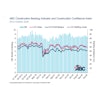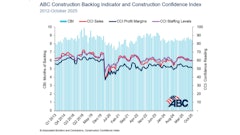It’s the time of year to set aside a few moments to clean up your office. It’s time to go through your “in box” to see what really important stuff you forgot to do; start cleaning up your financial records to figure out what your cash position is; estimate your tax position for 2004; and, in general, clean up your operations.
After going through this process, most people are amazed at what they find out about how their business operates. You owe it to yourself, your family and your employees to go through this exercise.
Find out where you stand
Management teams in public companies are now required to certify their internal controls over financial reporting. They have to state that they have a system in place; that it is working; and that they test it to make sure it works and the balances they show in their annual report are accurate. (They spend millions every year to ensure this happens and still can’t seem to get it right.)
Could your management team certify your annual reporting in a similar fashion? Could you? If not, you are going to be one of those “amazed” people referred to above.
What would I want to do in your place? I would figure out what I need to do to determine where I stand. It may or may not be that simple, depending on the kind of business you operate and the size. If you need some help, get it.
Ask for a copy of the latest bank reconciliation and bank statement. If you can’t go through it and trace back the reconciling items, have someone other than the person who performs the bank reconciliation do it. Maybe your external accountant can assist you with this process. If there is something you don’t understand, get a full explanation to ensure you do.
Get a copy of your latest adjusted trial balance. Go through each balance sheet account and ask for support of the balance. The support may be in the form of a supporting schedule or just a copy of the activity on a computer screen. What is in all these accounts? Are they current? Should they be reclassified or written off? Should you be following up to finalize a transaction so they will go away?
Who is responsible for following up on these and are they doing their job as you expect them to do? (Perform this step and I guarantee you will be amazed again and again.)
Now let’s look at the payroll. How are people getting paid? Let’s recalculate some of these. Look at overtime — is it appropriate? How about expense reimbursement and mileage? What about vacation and personal time — is it properly accounted for? Is the payroll allocated properly?
How about the billing? Is it getting done on time and for the right amount? Are billing items properly approved? Are any credits being issued and are they properly approved? Are you staying on top of balances over 45 days old? Are you aware of why some accounts are over 90 days? Are credit and collection policies being adhered to?
Let’s grab that pile of bills ready for approval or payment. Do you have a set policy for approving bills? Is it being followed? Do you see anything unusual?
Do you have a proper segregation of duties? If not, you have to be especially careful with everything mentioned so far. If you have one person who does the billing, collects the money, pays the bills and reconciles the bank, you have above-average risk. You can minimize it, but it will take some work to do so.
At a minimum, you should sign all checks that go out the door and have the bank statement delivered to you unopened. Check the contents of the bank statement.
There should be no charges against your account except the ones you authorized. I would also open the mail to see what deposit should be made for the day, then see a copy of the deposit ticket to make sure it made it to the bank. I would also have your external accountant look over the cash very carefully at year-end.
At some point in time, you need to review the trial balance for the income statement items to see how they appear on the income statement. Some stand alone but most get combined in some fashion. Do the balances look right? Are they similar to the prior year? Are they what you expected? If not, find out what makes up the account balance and why. Get to the bottom of it.
Take charge of your finances
After you go through this process, you will have a handle on your cash position, and should be able to estimate your tax position. However, if this process is completely foreign to you, get help from someone from outside your company.
There are plenty of independent contractors out there who will do this type of work for a reasonable dollar. Ask your accountant — he or she will know of people in this line of work.
This type of cleanup will put you back in charge of your finances. You can add, subtract or modify your accounting and cash-handling policies and procedures as a result of your efforts. And remember, if employees know you are going to do this every year, they will do a lot better job of staying the course. As you know, don’t expect what you don’t inspect.
Ready to certify your financial statement yet? You may be closer than you think.
Garry Bartecki is director of dealer/distributor services at BDO Seidman, LLP of Chicago, as well as a consultant to the AED. He has also worked as an independent CPA and consultant to equipment dealers. He can be reached at (312) 616-4677 or [email protected].
The Cleanup Process
1. Get a copy of your company’s latest bank reconciliation and bank statement. Trace back the reconciling items. 2. Get a copy of your latest adjusted trial balance. Go through each balance sheet account and ask for supporting documentation. 3. Examine your payroll records to ensure appropriate employee payments/reimbursements. 4. Inspect and correct your billing process. 5. Check your bank statements for accuracy and any signs of unauthorized payments, missing deposits, etc. 6. Review the trial balance for the income statement items to see how they appear on the statement. Compare the balances to the previous year. 7. Get help with the cleanup process as needed.
















